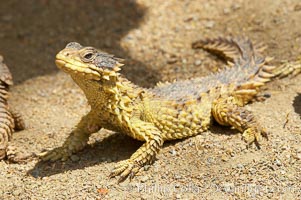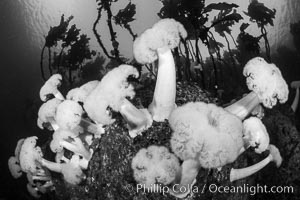
Giant Plumose Anemones cover underwater reef, Browning Pass, northern Vancouver Island, Canada.
Species: Giant plumose anemone, Metridium farcimen
Location: British Columbia, Canada
Image ID: 35417
Species: Giant plumose anemone, Metridium farcimen
Location: British Columbia, Canada
Image ID: 35417
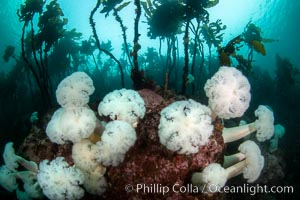
Giant Plumose Anemones cover underwater reef, Browning Pass, northern Vancouver Island, Canada.
Species: Giant plumose anemone, Metridium farcimen
Location: British Columbia, Canada
Image ID: 35418
Species: Giant plumose anemone, Metridium farcimen
Location: British Columbia, Canada
Image ID: 35418
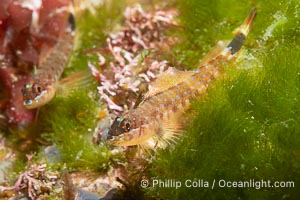
Lizard Triplefin Blenny, Crocodilichthys gracilis, Sea of Cortez.
Species: Lizard Triplefin Blenny, Crocodilichthys gracilis
Location: Islas San Lorenzo, Baja California, Mexico
Image ID: 40435
Species: Lizard Triplefin Blenny, Crocodilichthys gracilis
Location: Islas San Lorenzo, Baja California, Mexico
Image ID: 40435
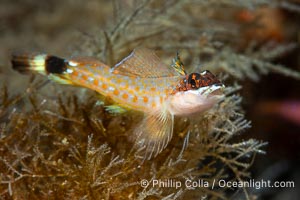
Lizard Triplefin Blenny, Crocodilichthys gracilis, Sea of Cortez.
Species: Lizard Triplefin Blenny, Crocodilichthys gracilis
Location: Islas San Lorenzo, Baja California, Mexico
Image ID: 40463
Species: Lizard Triplefin Blenny, Crocodilichthys gracilis
Location: Islas San Lorenzo, Baja California, Mexico
Image ID: 40463
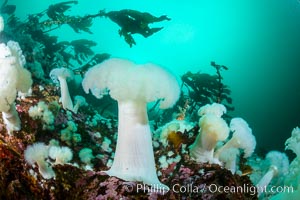
Giant Plumose Anemones cover underwater reef, Browning Pass, northern Vancouver Island, Canada.
Species: Giant plumose anemone, Metridium farcimen
Location: British Columbia, Canada
Image ID: 34372
Species: Giant plumose anemone, Metridium farcimen
Location: British Columbia, Canada
Image ID: 34372
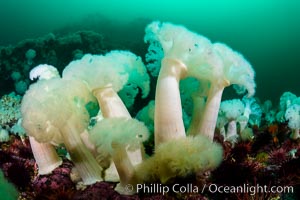
Giant Plumose Anemones cover underwater reef, Browning Pass, northern Vancouver Island, Canada.
Species: Giant plumose anemone, Metridium farcimen
Location: British Columbia, Canada
Image ID: 34373
Species: Giant plumose anemone, Metridium farcimen
Location: British Columbia, Canada
Image ID: 34373
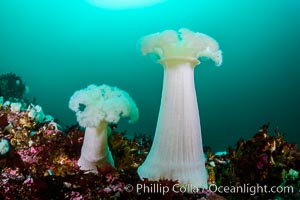
Giant Plumose Anemones cover underwater reef, Browning Pass, northern Vancouver Island, Canada.
Species: Giant plumose anemone, Metridium farcimen
Location: British Columbia, Canada
Image ID: 34375
Species: Giant plumose anemone, Metridium farcimen
Location: British Columbia, Canada
Image ID: 34375
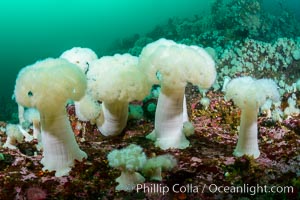
Giant Plumose Anemones cover underwater reef, Browning Pass, northern Vancouver Island, Canada.
Species: Giant plumose anemone, Metridium farcimen
Location: British Columbia, Canada
Image ID: 34376
Species: Giant plumose anemone, Metridium farcimen
Location: British Columbia, Canada
Image ID: 34376
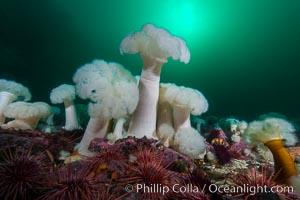
Giant Plumose Anemones cover underwater reef, Browning Pass, northern Vancouver Island, Canada.
Species: Giant plumose anemone, Metridium farcimen
Location: British Columbia, Canada
Image ID: 34389
Species: Giant plumose anemone, Metridium farcimen
Location: British Columbia, Canada
Image ID: 34389
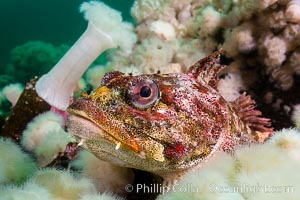
Red Irish Lord resting amid Plumose Metridium Anemones, Browning Pass, British Columbia.
Species: Giant plumose anemone, Red irish lord, Hemilepidotus hemilepidotus, Metridium farcimen
Location: British Columbia, Canada
Image ID: 34391
Species: Giant plumose anemone, Red irish lord, Hemilepidotus hemilepidotus, Metridium farcimen
Location: British Columbia, Canada
Image ID: 34391
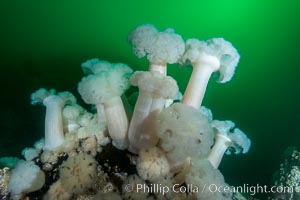
Giant Plumose Anemones cover underwater reef, Browning Pass, northern Vancouver Island, Canada.
Species: Giant plumose anemone, Metridium farcimen
Location: British Columbia, Canada
Image ID: 34392
Species: Giant plumose anemone, Metridium farcimen
Location: British Columbia, Canada
Image ID: 34392

Giant Plumose Anemones cover underwater reef, Browning Pass, northern Vancouver Island, Canada.
Species: Giant plumose anemone, Metridium farcimen
Location: British Columbia, Canada
Image ID: 34393
Species: Giant plumose anemone, Metridium farcimen
Location: British Columbia, Canada
Image ID: 34393
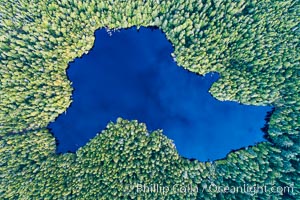
Balaklava Lake on Balaklava Island, Aerial Photo.
Location: British Columbia, Canada
Image ID: 34469
Location: British Columbia, Canada
Image ID: 34469
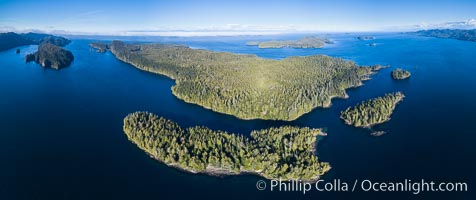
Browning Pass and Balaklava Island, location of the best cold water diving in the world, aerial panoramic photo.
Location: British Columbia, Canada
Image ID: 34471
Panorama dimensions: 5157 x 12273
Location: British Columbia, Canada
Image ID: 34471
Panorama dimensions: 5157 x 12273
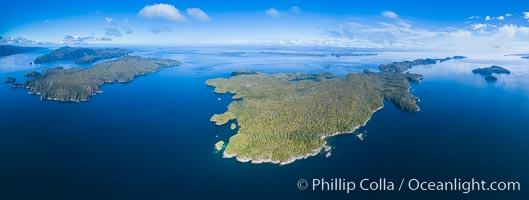
Hurst Island, Balaklava Island (left) and Gods Pocket Provincial Park, aerial photo.
Location: Gods Pocket Provincial Park, Vancouver Island, British Columbia, Canada
Image ID: 34473
Panorama dimensions: 5112 x 13528
Location: Gods Pocket Provincial Park, Vancouver Island, British Columbia, Canada
Image ID: 34473
Panorama dimensions: 5112 x 13528
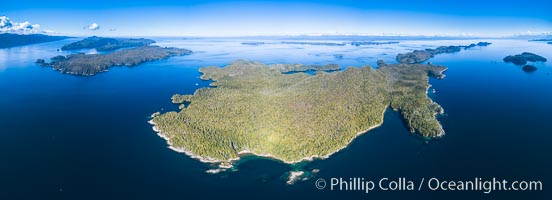
Hurst Island, Balaklava Island (left) and Gods Pocket Provincial Park, aerial photo.
Location: Gods Pocket Provincial Park, Vancouver Island, British Columbia, Canada
Image ID: 34479
Panorama dimensions: 5202 x 14357
Location: Gods Pocket Provincial Park, Vancouver Island, British Columbia, Canada
Image ID: 34479
Panorama dimensions: 5202 x 14357
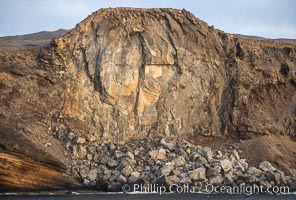
Lava tube terminates at shoreline.
Location: Guadalupe Island (Isla Guadalupe), Baja California, Mexico
Image ID: 03683
Location: Guadalupe Island (Isla Guadalupe), Baja California, Mexico
Image ID: 03683
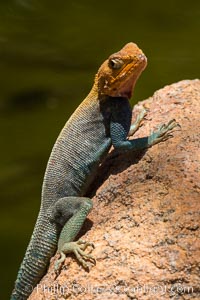
Agama Lizard, Meru National Park, Kenya.
Species: Agama lizard, Agama
Location: Meru National Park, Kenya
Image ID: 29733
Species: Agama lizard, Agama
Location: Meru National Park, Kenya
Image ID: 29733
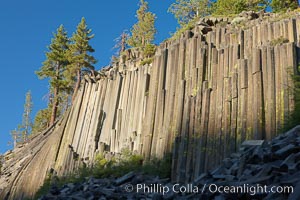
Devil's Postpile, a spectacular example of columnar basalt. Once molten and under great pressure underground, the lava that makes up Devil's Postpile cooled evenly and slowly, contracting and fracturing into polygonal-sided columns. The age of the formation is estimated between 100 and 700 thousand years old. Sometime after the basalt columns formed, a glacier passed over the formation, cutting and polishing the tops of the columns. The columns have from three to seven sides, varying because of differences in how quickly portions of the lava cooled.
Location: Devils Postpile National Monument, California
Image ID: 23266
Location: Devils Postpile National Monument, California
Image ID: 23266
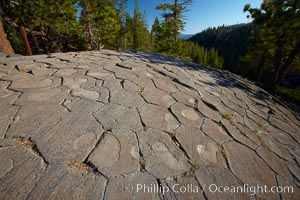
Devil's Postpile, a spectacular example of columnar basalt. Once molten and under great pressure underground, the lava that makes up Devil's Postpile cooled evenly and slowly, contracting and fracturing into polygonal-sided columns. The age of the formation is estimated between 100 and 700 thousand years old. Sometime after the basalt columns formed, a glacier passed over the formation, cutting and polishing the tops of the columns. The columns have from three to seven sides, varying because of differences in how quickly portions of the lava cooled.
Location: Devils Postpile National Monument, California
Image ID: 23267
Location: Devils Postpile National Monument, California
Image ID: 23267
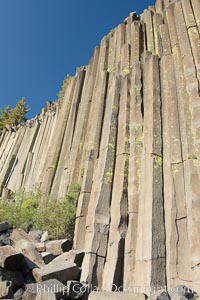
Devil's Postpile, a spectacular example of columnar basalt. Once molten and under great pressure underground, the lava that makes up Devil's Postpile cooled evenly and slowly, contracting and fracturing into polygonal-sided columns. The age of the formation is estimated between 100 and 700 thousand years old. Sometime after the basalt columns formed, a glacier passed over the formation, cutting and polishing the tops of the columns. The columns have from three to seven sides, varying because of differences in how quickly portions of the lava cooled.
Location: Devils Postpile National Monument, California
Image ID: 23285
Location: Devils Postpile National Monument, California
Image ID: 23285
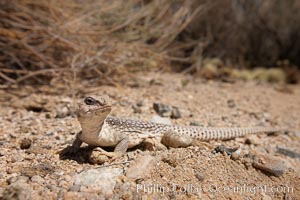
Desert iguana, one of the most common lizards of the Sonoran and Mojave deserts of the southwestern United States and northwestern Mexico.
Species: Northern desert iguana, Dipsosaurus dorsalis
Location: Joshua Tree National Park, California
Image ID: 26728
Species: Northern desert iguana, Dipsosaurus dorsalis
Location: Joshua Tree National Park, California
Image ID: 26728
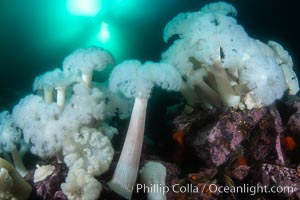
Giant Plumose Anemones cover underwater reef, Browning Pass, northern Vancouver Island, Canada.
Species: Giant plumose anemone, Metridium farcimen
Location: British Columbia, Canada
Image ID: 35435
Species: Giant plumose anemone, Metridium farcimen
Location: British Columbia, Canada
Image ID: 35435
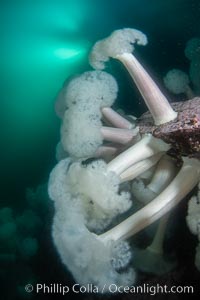
Giant Plumose Anemones cover underwater reef, Browning Pass, northern Vancouver Island, Canada.
Species: Giant plumose anemone, Metridium farcimen
Location: British Columbia, Canada
Image ID: 35436
Species: Giant plumose anemone, Metridium farcimen
Location: British Columbia, Canada
Image ID: 35436
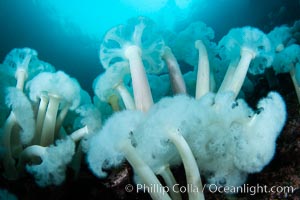
Giant Plumose Anemones cover underwater reef, Browning Pass, northern Vancouver Island, Canada.
Species: Giant plumose anemone, Metridium farcimen
Location: British Columbia, Canada
Image ID: 35456
Species: Giant plumose anemone, Metridium farcimen
Location: British Columbia, Canada
Image ID: 35456
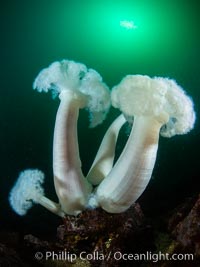
Giant Plumose Anemones cover underwater reef, Browning Pass, northern Vancouver Island, Canada.
Species: Giant plumose anemone, Metridium farcimen
Location: British Columbia, Canada
Image ID: 35475
Species: Giant plumose anemone, Metridium farcimen
Location: British Columbia, Canada
Image ID: 35475
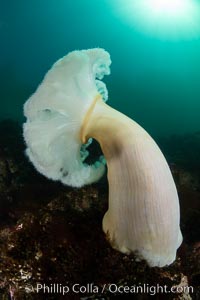
Giant Plumose Anemones cover underwater reef, Browning Pass, northern Vancouver Island, Canada.
Species: Giant plumose anemone, Metridium farcimen
Location: British Columbia, Canada
Image ID: 35500
Species: Giant plumose anemone, Metridium farcimen
Location: British Columbia, Canada
Image ID: 35500
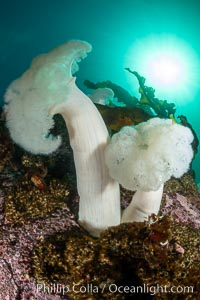
Giant Plumose Anemones cover underwater reef, Browning Pass, northern Vancouver Island, Canada.
Species: Giant plumose anemone, Metridium farcimen
Location: British Columbia, Canada
Image ID: 35501
Species: Giant plumose anemone, Metridium farcimen
Location: British Columbia, Canada
Image ID: 35501
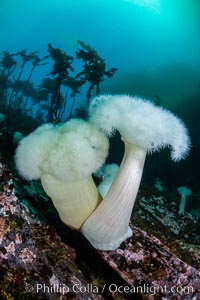
Giant Plumose Anemones cover underwater reef, Browning Pass, northern Vancouver Island, Canada.
Species: Giant plumose anemone, Metridium farcimen
Location: British Columbia, Canada
Image ID: 35504
Species: Giant plumose anemone, Metridium farcimen
Location: British Columbia, Canada
Image ID: 35504
